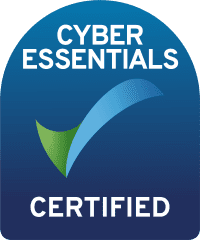It may feel like a long time until your staging date, but there are some key things that you can do now to help you get started.
Nominate a point of contact within your company
If your staging date is less than 18 months away, you'll have received a letter from TPR with a unique letter code.
If you have your letter code, you should let TPR know your nominated point of contact as soon as possible.
Know your staging date
Your staging date is determined by the total number of employees in your largest PAYE scheme, based on information provided by HMRC on 1 April 2012.
Can I delay my staging date?
Employers with less than 50 employees on 1 April 2012, who are part of a larger PAYE scheme, can move to a later prescribed date. Read more >>
If you had 50 or more employees on 1 April 2012, you can only bring your staging date forward.
Make a plan
It’s important you take plenty of time to understand what your business needs to do to prepare as each company is different. TPR recommend between 12 and 18 months to plan for your staging date.
The information in these articles will help you to understand each step and how long it may take you.
Once you know your staging date, we advise you create reminders in your calendar so that you can make sure you’re always on schedule.
Check business processes
Why do I need to check my business processes?
You need to make sure that you have the processes in place to support the change to automatic enrolment. At HPS we can calculate pension deductions for you.
However, you may also need to create or update processes to support this, for example:
Deadline for timesheets
As part of your ongoing assessment for automatic enrolment, each pay period you need to check if any of your employees become eligible jobholders. Part of the criteria is how much your employee earns, and if their pay reaches the automatic enrolment trigger, you must automatically enrol them.
To help you with this, you may need to set or amend any deadlines you have for receiving employee timesheets. The earlier you get them, the sooner you'll be able to determine if any of your employees earn enough to be automatically enrolled.
Deadlines for receiving opt in or join notices
The date you receive the opt in or join notice determines which period the employee is enrolled, and when the first contribution is deducted. It's important you know how long it takes you and your pension provider to enrol an employee, as this will determine when your deadline is.
If you receive the notice in time, you can assess the employee on the first day of the next tax period. If the notice is received too late, the enrolment date is the first date of the second tax period.
Process for handling opt out and refunds
There's a one month window when a jobholder is entitled to opt out and receive a refund. You should understand when the opt out period is for each employee who is enrolled into a pension scheme, and ensure you communicate these dates to the relevant employees.
You should also understand whether your pension provider will process any refunds directly to the employee, or whether you must provide this refund.
The refund is the amount the employee has contributed and you must provide the refund by the refund date. Read more >>
New starter process
When a new employee starts with your business, they must be assessed under automatic enrolment. You should decide whether you want to postpone new starters to align with the start of a tax period, or whether you want to automatically enrol any new eligible job holders on their first day.
You should decide what's best for you and your business. You may also want to decide what to do with employees who have a pay increase that changes their worker category to an eligible jobholder and employees who reach 22 years of age.
Pension provider requirements
A big part of automatic enrolment are your interactions with your pension provider. To ensure you're complying with their needs you'll need to come up with a list of questions to ask, for example:
- Does your pension scheme meet automatic enrolment requirements?
- Do you need to pay over employee contributions to the pension provider straight away?
- Will your pension provider be paying employee refunds on your behalf?
You should speak to your provider to ensure they aren't any other questions you need answers to.
Other Articles
Helping you with Automatic Enrolment (Workplace Pensions)
Automatic Enrolment (Workplace Pensions) – Communicate to employees




